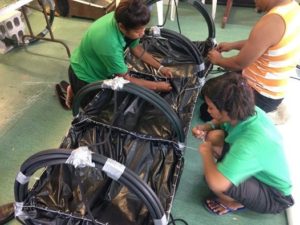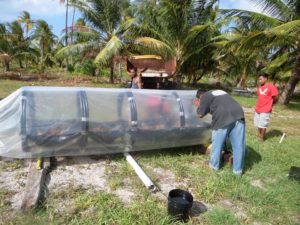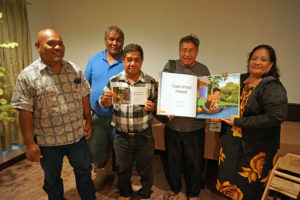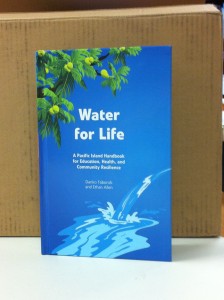Students in Majuro’s Life Skills Academy (LSA) are generating fresh water from seawater by building solar stills.
Here’s a completed still, below.
About 5 – 8 gallons of seawater goes in the black trays. Solar energy does the rest.
By evaporation and condensation, at the end of a day, about 1/2 – 1 gallon of fresh water has collected in the bottom.
A simple design that advances self-sustainability!
This is part of our Water for Life supplemental grant – Food, Energy, & Water: Leveraging and Organizing Toward Self-sustainability (FEW-LOTS) – from the National Science Foundation.
Thanks to:
- Dr. Koh Ming Wei
- Our collaborators at LSA, Marshall Islands High School, and the College of the Marshall Islands
- And especially to Dustin Langidrik and his students from the University of the South Pacific for teaching our LSA students how to make these




